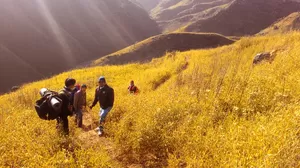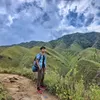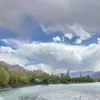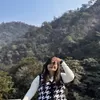
Best months to visit Dzükou Valley
All yearTraveller Type
Families, FriendsDzükou Valley
Dzükou Valley Reviews
The Dzukou valley, also known as the "Valley of the Flowers of the North East," is  boasting picturesque hill towns and breathtaking scenery. It's a beautiful spot with rippling slopes, moving steam, on the border of Nagaland and Manipur. The location is especially lovely in the summer, when the vibrant blooms . The valley is blanketed in snow during the winter, creating an incredible setting for a  gateway. It is one of northeastern India's best trekking trails.The endangered Dzukou lily can only be found in this valley. The valley also has variety of flowers, such as lilies, euphorbias, and rhododendrons. The valley has the appearance of mossy green spread.To get to the Dzukou Valley, you must first go to Dimapur. You can drive to Kohima, the capital of Nagaland, from Dimapur. Because there are only 74 kilometres separating the two cities, the journey only lasts a few hours. Take a private taxi from Kohima to  Zakhama or Viswema Village after arriving. From there you can set out to the Dzukou Valley.
Northeastern India's Dzukou Valley, also known as Dzükou Valley or Dzüko Valley, is located 2,452 metres above sea level and straddles the border between Nagaland and Manipur.In the summer, brilliant flowers flutter in the breezes among the long grasses as vivid green hillocks lead to blue mountaintops. When it gets colder than one would anticipate for such tropical states, Dzukou Valley freezes and occasionally gets dusted with snow.
3. Dzüko Valley, North-EastNorth-East is the most pleasing but less explored part of the country. At an altitude of 2452m above sea level, situated on the border of Nagaland and Meghalaya, this valley is famous for its wide range of flowers blooming every season. But the most famous one is the Dzüko Lily, after which the valley has been named.Flora: Dzüko Lily (Lilium mackliniae), several rhododendron species, plants such as the aconita nagaramFauna: The Asian golden cat, The Hollock Gibbon, The Dzuko Valley horned toad (Megophrys dzukou), several species of leopard including the clouded leopard, the Asiatic black bear, the capped langur, the stump-tailed macaque, and the serowHow to reach :By Air: Dimapur Airport (74kms) is the nearest to Kohima, from where one can catch a bus or a taxi to the last motorable road.By Train: Nearest railway station is in Dimapur (70kms) near to the capital city of Nagaland, KohimaBy road: 20kms away from Kohima lies two towns named Jakhama and Viswema. These are the villages where you can find a motorable road. From hereon, we trek further up the valley.P.S.: Trekking from Viswema is a little simpler than the Jakhama trek. Hence advised to trek up by the Viswema route and trek down by the Jakhama route.Best Time to Visit: June-end till SeptemberTime: 7am - 6pm
Dzukou Valley in Nagaland The best time to visit this place is end of June till September.Dzukou Village is located in the North East States, Nalagand, and Manipur and is also known for the adventure sports in the Kohima, Nagaland.Dzukou Valley is affluent with lush green and thick vegetation, which offers one of the most mesmerizing treks with the backdrop of snow-clad Himalayas.




